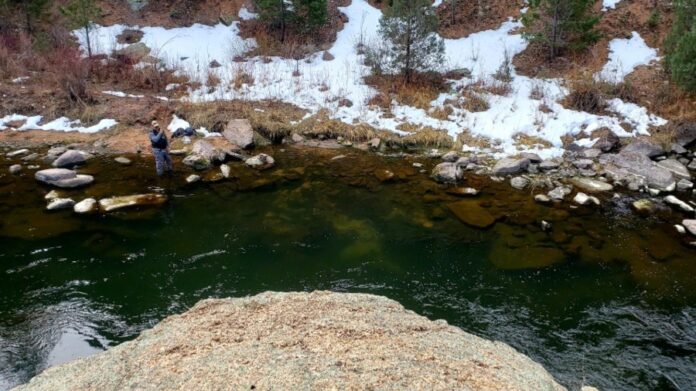Photo by Evan Jones
Winter fishing isn’t for everyone: bitter cold, sluggish fish, and short days are enough to keep a good number of anglers off the river until at least March. But that doesn’t mean hitting the water between the months of December and February has to be a chore. There are a few perks to fishing during the coldest months–beyond the aforementioned decrease in crowds–that help to balance out the downsides. Here are three benefits to consider next time you’re debating a winter fishing trip:
1. Matching the Hatch is Simpler
At the risk of over-generalizing, most rivers will have fewer insect hatches during the winter months, producing mostly small midges and the occasional small mayflies. Given these limited options, the trout are more likely to key-in and feed on these sporadic hatches than they are in warmer months, which, in turn, helps to limit your winter fly options. Sparse, dark-colored nymphs on size 18-22 hooks will cover most scenarios, eliminating the need to haul around multiple fly boxes and a seine net.

Photo by Brian Slusser
2. You Can Sleep In
Unless you’ve got a long drive ahead, there’s no need for the dreaded 5am alarm this time of year. Fishing is likely to be best during the warmest part of the day–which is typically after noon–meaning you’ve got plenty of time to enjoy that second cup of coffee before leaving home. It’s not only a more pleasant way to start the day, but there is a practical benefit, as well, since you’re more likely to be at your best when not deprived of sleep and/or breakfast by a pre-dawn start.

Photo by Evan Jones
3. Finding Fish is Easier
Lower flows and clearer water combine to make sightfishing a lot more feasible during winter months. Not only are the fish themselves easier to see, but the contours and features of the river bottom are more apparent as well, making it easier to predict where fish you can’t see might be sitting. Chances are good they’re all bunched up together in the deepest holes, which helps to further narrow down your search.
Credit: Source link






























